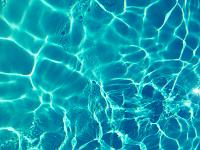


Creates simple stereogram based on a very tall tiled texture rendered using:
Code from TextureStereogram.scala:76 executed in 0.00 seconds (0.000 gc):
implicit val _ = log
// First, basic configuration so we publish to our s3 site
log.setArchiveHome(URI.create(s"s3://$s3bucket/${getClass.getSimpleName.stripSuffix("$")}/${log.getId}/"))
log.onComplete(() => upload(log): Unit)
// Fetch image (user upload prompt) and display a rescaled copy
log.out(log.jpg(ImageArtUtil.load(log, styleUrl, (maxWidth * Math.sqrt(magnification)).toInt), "Input Style"))
// Render and display the depth map
val depthImage = depthMap((maxHeight * maxAspect).toInt, maxHeight, text)
log.out(log.jpg(depthImage.toImage, "Depth Map"))
val canvas = new AtomicReference[Tensor](null)
// Renders the sterogram
def rendered = {
val input = canvas.get()
if (null == input) input else {
Tensor.fromRGB(stereoImage(depthImage, input, depthFactor))
}
}
// Tiling layer used by the optimization engine.
// Expands the canvas by a small amount, using tile wrap to draw in the expanded boundary.
def tiled(dims: Seq[Int]) = {
val padding = Math.min(256, Math.max(16, dims(0) / 2))
new ImgViewLayer(dims(0) + padding, dims(1) + padding, true)
.setOffsetX(-padding / 2).setOffsetY(-padding / 2)
}
// Execute the main process while registered with the site index
val registration = registerWithIndexJPG(rendered)
try {
// Display the stereogram
withMonitoredJpg(() => rendered.toImage) {
// Display an additional single tile of the texture canvas
withMonitoredJpg(() => Option(canvas.get()).map(_.toRgbImage).orNull) {
log.subreport("Painting", (sub: NotebookOutput) => {
texture(maxHeight.toDouble / maxWidth, initUrl, canvas, new VisualStyleNetwork(
styleLayers = List(
// We select all the lower-level layers to achieve a good balance between speed and accuracy.
VGG16.VGG16_0,
VGG16.VGG16_1a,
VGG16.VGG16_1b1,
VGG16.VGG16_1b2,
VGG16.VGG16_1c1,
VGG16.VGG16_1c2,
VGG16.VGG16_1c3
),
styleModifiers = List(
// These two operators are a good combination for a vivid yet accurate style
new GramMatrixEnhancer(),
new MomentMatcher()
),
styleUrl = List(styleUrl),
magnification = magnification,
viewLayer = tiled
), new BasicOptimizer {
override val trainingMinutes: Int = 60
override val trainingIterations: Int = 30
override val maxRate = 1e9
}, new GeometricSequence {
override val min: Double = minWidth
override val max: Double = maxWidth
override val steps = 2
}.toStream.map(_.round.toDouble))(sub)
null
})
uploadAsync(log)
}(log)
}
null
} finally {
registration.foreach(_.stop()(s3client, ec2client))
}
}
<function0>